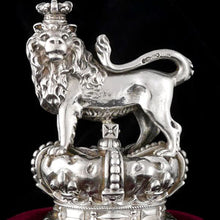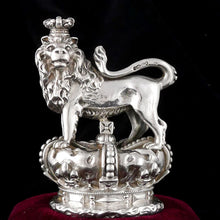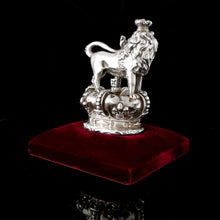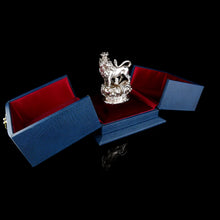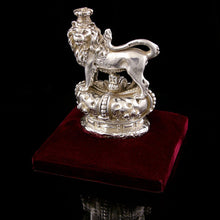An Early Victorian Silver Finial by Paul Storr, 1838-39
SOLD
Tax included.
Adding product to your cart
Height: 10.5cm (4.2in)
Modelled as the Royal Crest (a lion statant guardant on the royal crown) by the silversmith Paul Storr. Silver hallmarks for London 1838-39. Contained in a new presentation case.
The London silversmith Paul Storr (1771-1844) served his apprenticeship with Andrew Fogelberg and started out on his own account in 1796. In 1807, he began his association with the Royal goldsmiths and silversmiths Rundell and Bridge (later Rundell, Bridge and Rundell), for whom he carried out many commissions ranging from simple tableware to the highly ornate sculptural works in both the neoclassical and rococo styles. Among his more famous commissions is the presentation cup created for Nelson following the Battle of the Nile. Other examples of his work can be found in White House collection and the Royal Collection. Storr left Rundell Bridge & Rundell in 1819 and entered a partnership with court jeweller John Mortimer, which was to last until his retirement.
Use left/right arrows to navigate the slideshow or swipe left/right if using a mobile device







